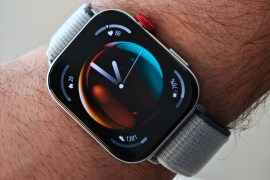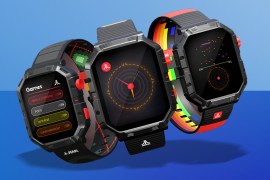Samsung Galaxy Watch Ultra review: extreme sports meet WearOS smarts
The ruftiest, tuftiest Galaxy Watch yet

Stuff Verdict
The Galaxy Watch Ultra is the tough WearOS watch many Samsung fans were waiting for. It’s got the sensors and smarts to challenge dedicated GPS watches, but you’re really paying for the bold design.
Pros
- Tough, weather-resistant case made for adventure
- Fitness and exercise tracking rivals serious sports watches
- Stellar screen and nippy performance
Cons
- Two-day battery life a bit underwhelming
- Can’t handle watersports like an Apple Watch Ultra can
Introduction
Samsung’s Galaxy Watch series has long been one of the best smartwatch choices for mainstream gadget fans, but serious athletes and adventurers had to look elsewhere. The Galaxy Watch Ultra aims to bring them back into the fold, just as the Watch Ultra 2 has done for Apple. The two have an awful lot in common, but this is no mere copycat.
It’s a wearable without compromise, built to withstand the elements and track triathlons as well as all the usual smartwatch hallmarks. Landing at $650/£599, it’s also a heck of a lot cheaper than Apple’s Ultra watch, and undercuts nearly every Garmin Fenix to boot. I’m not convinced every design change will go down well with fans, and there’s not as much distance between it and the Galaxy Watch7 as you’d expect – but there’s still an awful lot to like here.
Review originally published July 2024. Updated 21 March 2025: software updates address battery drain issues
How we test wearables
Every smartwatch and fitness tracker reviewed on Stuff is worn 24/7 throughout the testing process. We use our own years of experience to judge general performance, battery life, display, and health monitoring. Manufacturers have no visibility on reviews before they appear online, and we never accept payment to feature products.
Find out more about how we test and rate products.
Design & build: sort-of square
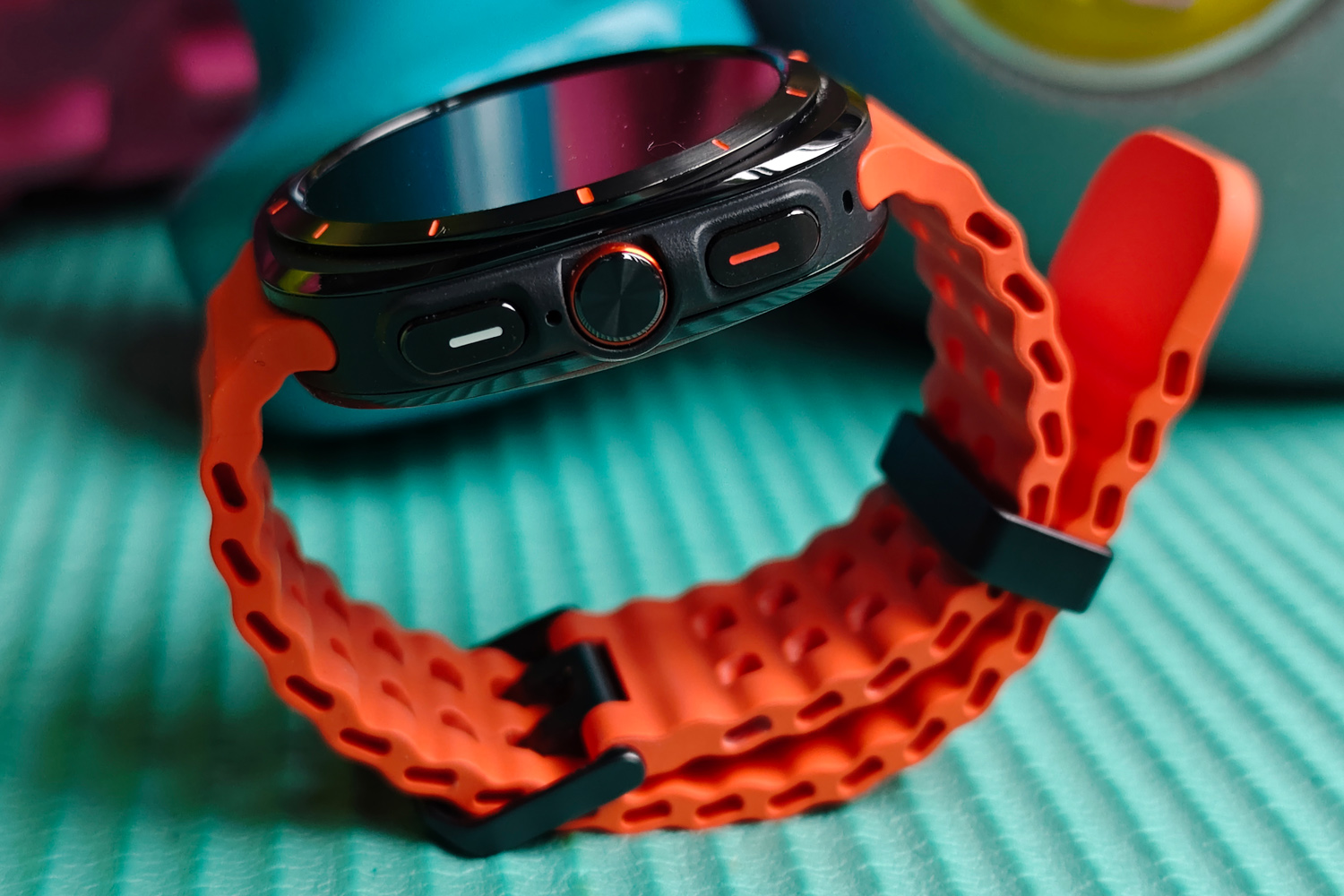
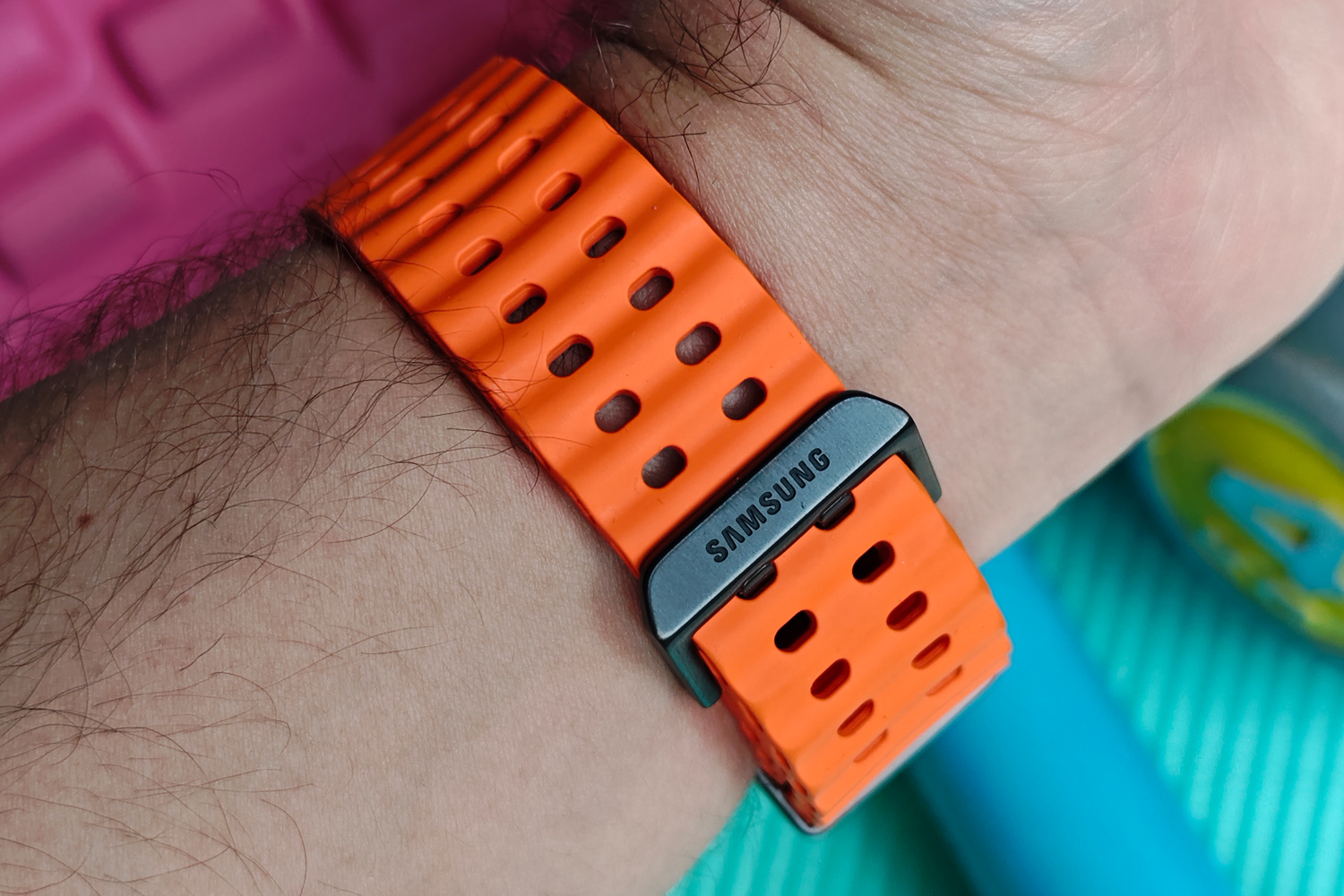
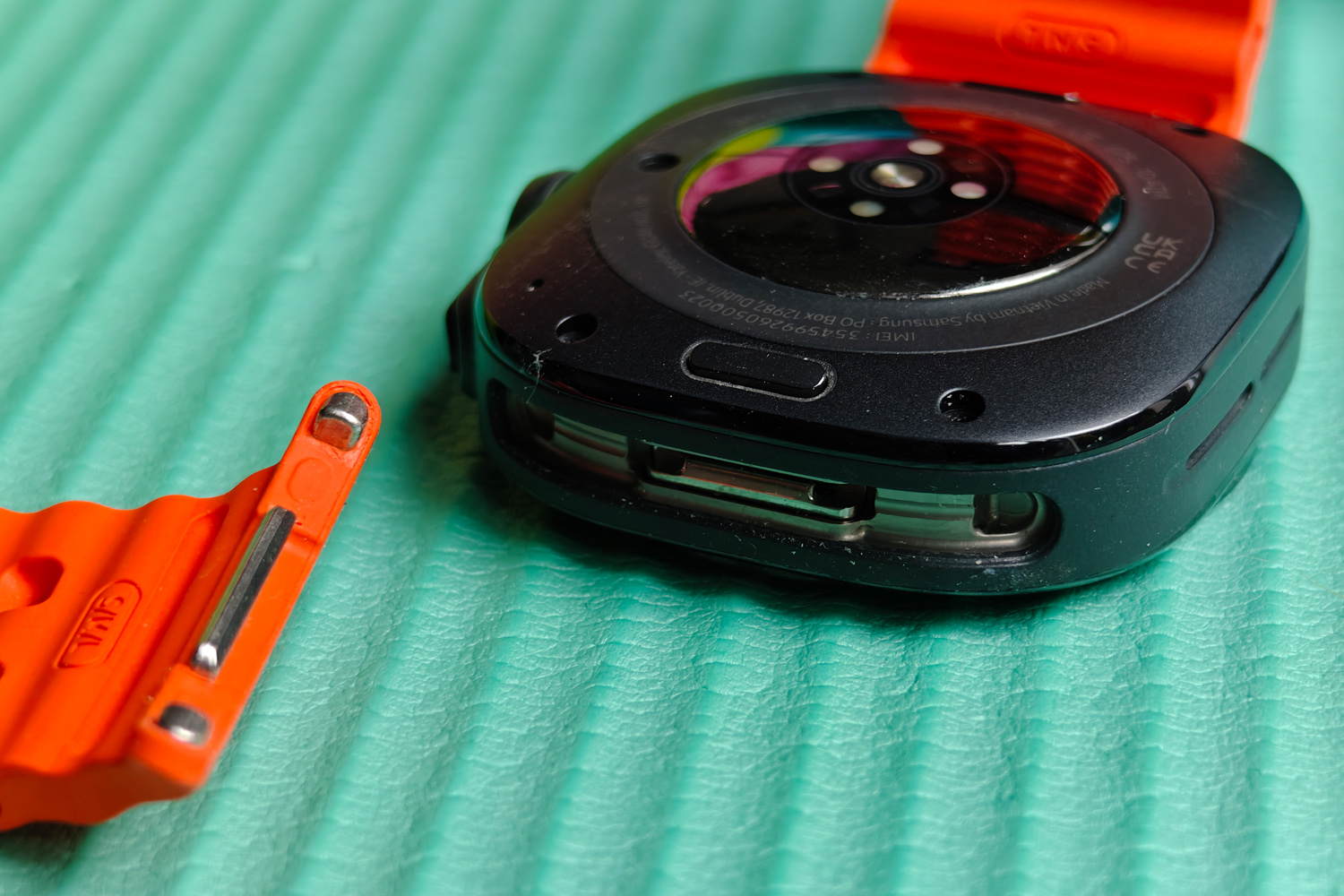
Compared to Samsung’s regular Galaxy Watch line, the Watch Ultra is a bit of a beast. The 47mm chassis is larger and chunkier than any previous effort, and swaps from a round case to a square one – but keeps the circular screen. I think that helps it do a much more convincing impression of a traditional timepiece than any square-faced wearable. More people have complimented the design than any other WearOS watch I’ve tested.
The case milled from titanium, which was more for toughness than light-weighting. At almost 61g there’ll be no forgetting you’ve got one of these on your wrist. I didn’t have any problems wearing it to bed, and it doesn’t bulge out so much I couldn’t slip it underneath a shirt sleeve.
It’s available in your choice of silver, grey and white colours; my titanium grey model came with an orange Marine band, which undeniably makes it look at least a little inspired by the Apple Watch Ultra. The white version is the most distinctive, and does a better job at avoiding the Apple comparisons.
Every version has orange accents on the side buttons that add a splash of colour. You get three here, instead of the Galaxy Watch7’s two; it can be customised to launch a specific exercise mode or app to save a bit of time when gearing up for an activity. A protruding crown guard prevented accidental presses during any arm flailing exertion.
The one thing I’m not a huge fan of? A return to proprietary lugs for the watch strap. The bundled silicone band has a double tongue buckle that guaranteed the watch never came loose, even during heavy exercise, and the ridged design helped wick away sweat. But if you want to swap it for something else, you’re stuck with Samsung’s official alternatives – or trying your luck once third-party makers release mounting attachments for regular watch bands.
Samsung claims an operating range of between -20 to 55°c and -500m to 9000m, which is up there with the best adventure watches. It has 10ATM resistance and open water certification, which makes it the obvious choice for serious swimmers over the regular Galaxy Watch7; that model only has 5ATM resistant and is rated for pool swimming only. A read through the small print reveals the Watch Ultra isn’t suitable for diving, though – something the Apple Watch Ultra 2 can manage.
Screen: now with night mode

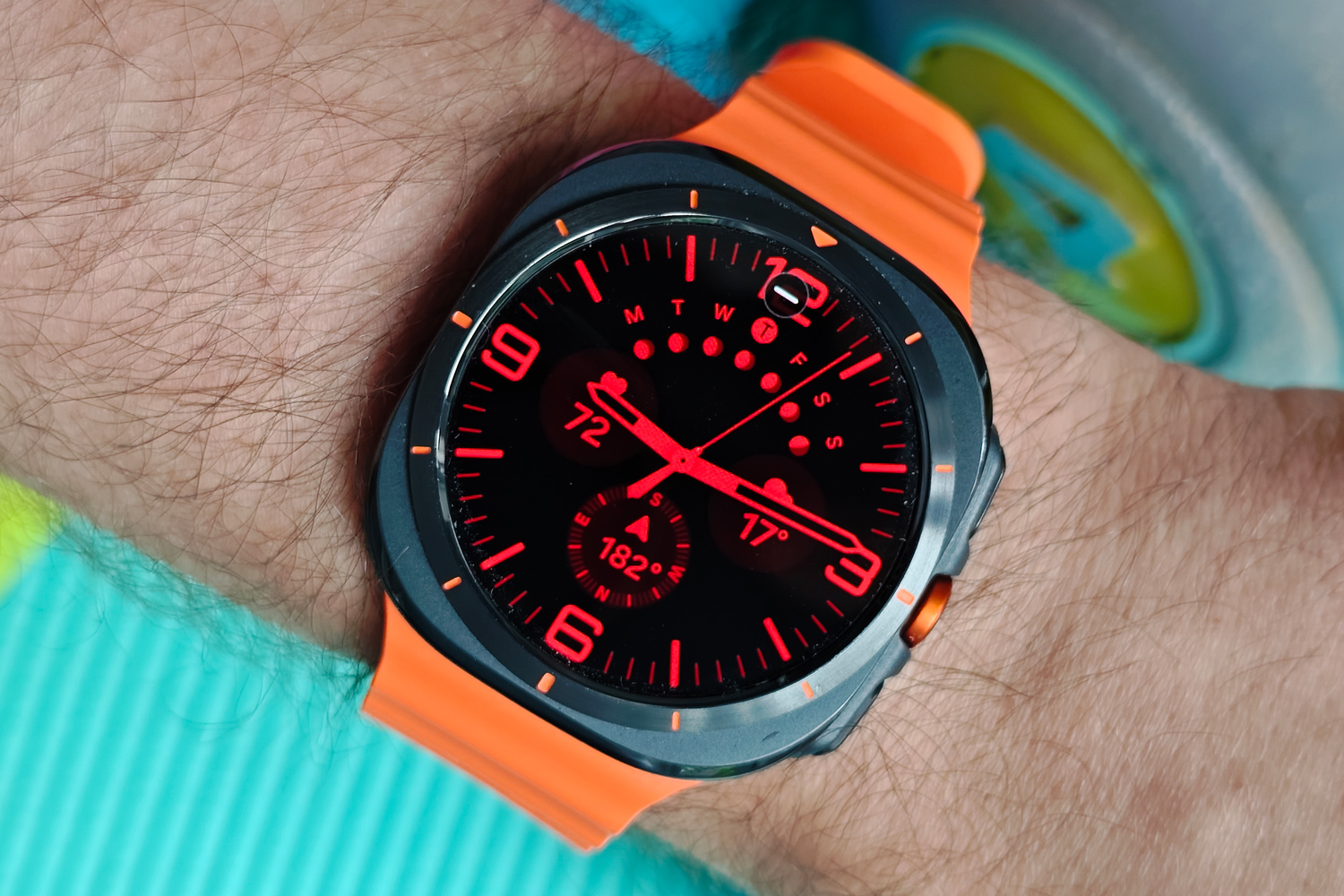
At 1.5in and with a 480×480 resolution, the Galaxy Watch Ultra’s circular AMOLED screen isn’t all that removed from the standard Galaxy Watch7’s 44mm variant – at least on paper. It looks just as sharp at arm’s length, its colours are just as impactful, and its viewing angles are just as fantastic.
The titanium outer bezel does a fantastic job of disguising where the panel begins and ends, looking almost edge-to-edge unless you break out the magnifying glass. I think it looks even slicker than the Apple Watch Ultra 2’s chunky rectangular screen. It gets equally as bright now, with a 3000 nit peak brightness that all but guarantees you can see what’s on the screen clearly, even under the harshest of summer sunshine. I had no issues seeing my split times while exercising outdoors.
Sapphire crystal glass is as scratch resistant as smartwatches get, and the raised outer bezel should help minimise accidental impacts; I definitely dodged a few potentially damaging knocks, and the titanium case used here held up brilliantly after several weeks of wear. That bodes well for long-term ownership.
The new night mode watch face isn’t going to have special forces operators queuing up at the Samsung store come launch day, but it’s a welcome addition for hikers and adventurers that don’t want to be blinded by their wristwear when out in the dead of night. It kicks in automatically based on ambient light, which I loved while driving once the sun had set; it was much less distracting than other smartwatches I’ve used.
Health & fitness: endurance athlete
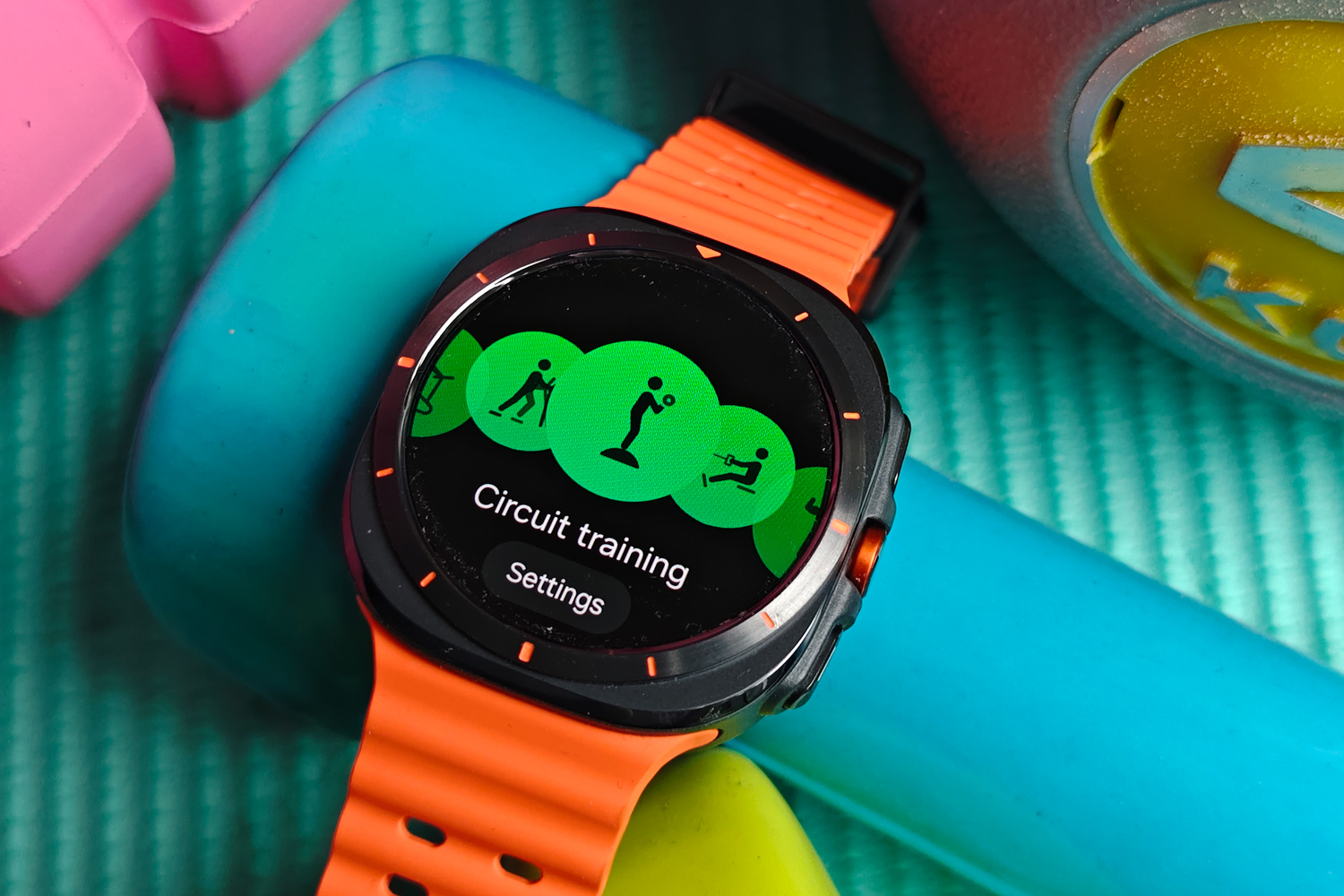
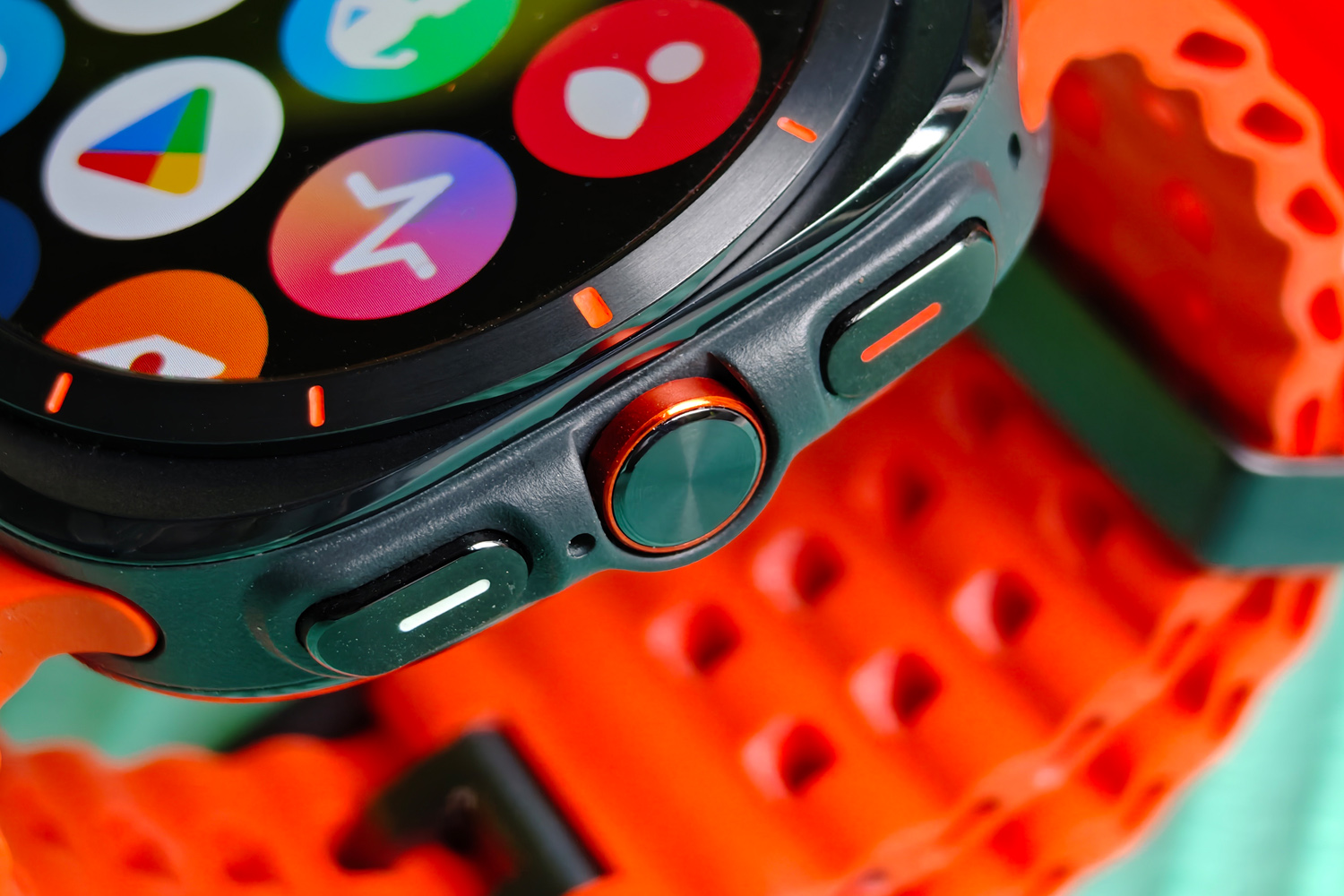
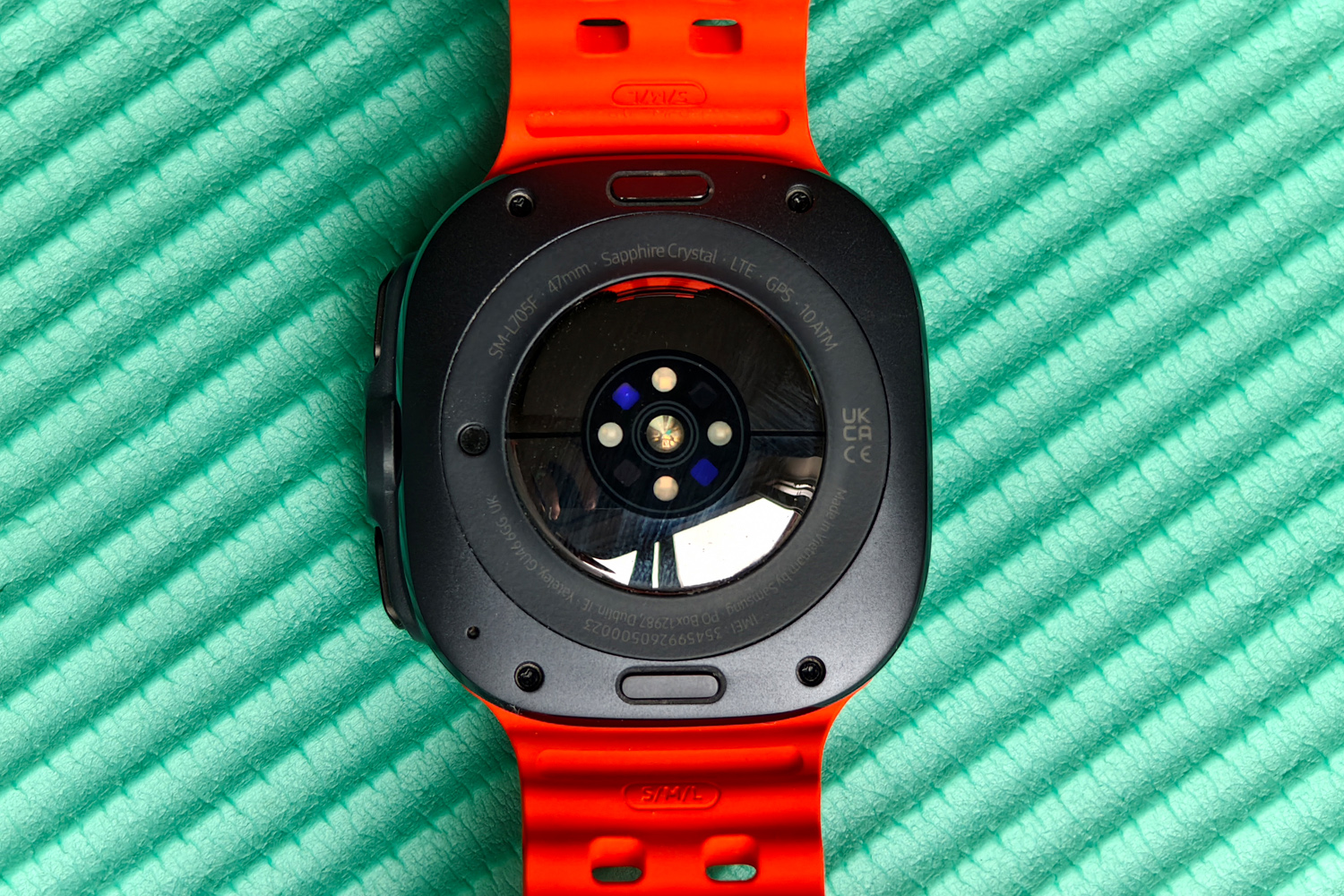
The top-level UI will feel familiar to anyone that’s used a Galaxy Watch in the past few years, but the Watch Ultra is actually running WearOS 5 underneath. Not even Google’s smartwatches have gotten this at the time of writing, although the changes are mostly behind-the-scenes ones. The biggest bespoke addition is a double-pinch gesture for answering incoming calls with one hand; an icon flashes up in relevant apps to remind you it can be used. It was handy while cycling, and recognised my gestures quickly, but it wasn’t a game-changer.
Underneath, Samsung has upgraded the bio sensor with extra LEDs that deliver heart rate accuracy in line with top-tier sports watches. Side-by-side with a Garmin, it produced consistent results during a run, with bpm charts in their respective apps being a very close match. Auto-detection is great, too; there’s no need to activate a session for things like walks or runs, the watch just knows and starts recording.
The Watch Ultra can also measure blood oxygen levels, count steps and sleep, take your skin temperature, and even track blood pressure once you calibrate it with some third-party kit. Again, tracking accuracy is on the money.
Dual frequency GPS tracking, which promises greater location tracking accuracy than single-band and is a given on high-end fitness trackers, also makes the grade – but then it does on the regular Galaxy Watch7 too. I didn’t think it was lightning-fast to get a location lock, but checking my running routes in Galaxy Health did show more consistency with a top-tier Garmin for distance travelled.
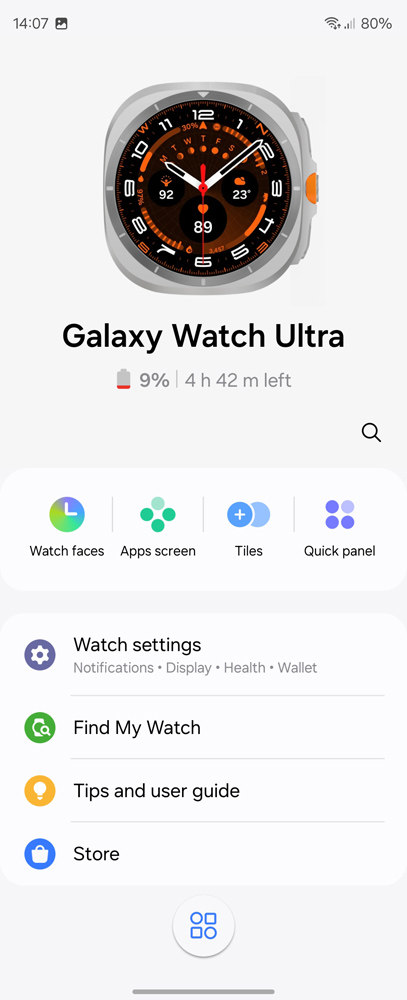
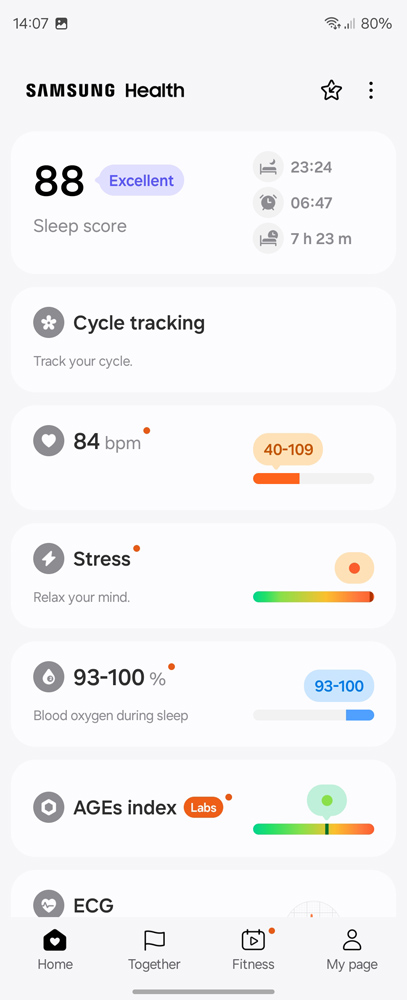
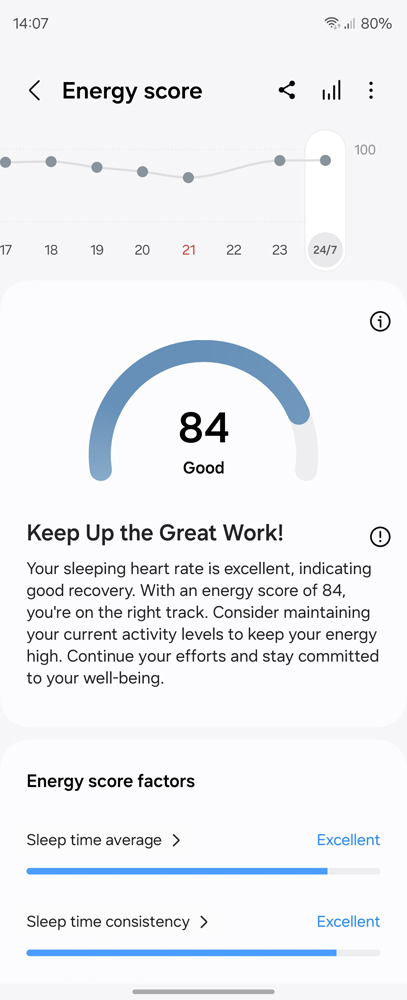
The Ultra earns its keep with a race mode, which can compare your past performance in real time when it detects you’re on a regular training route. Cyclists will appreciate the functional threshold power index, which is a better measure of pedal power than simply distance travelled over time. There’s even a multi-sports mode for triathlons, letting you track all three disciplines from a single homescreen tile.
The Samsung Health app is still a one-stop shop for all your data, with sleep scores represented by animals and a new Energy Score suggesting what to improve to raise your energy levels. The advanced glycation end products (AGEs) score is new, and meant to help spot early warning signs of diabetes or stroke, but it doesn’t put the data in much context. If you’re not a fitness freak, you might find it a case of information overload.
Performance & battery life: longer lasting, mostly
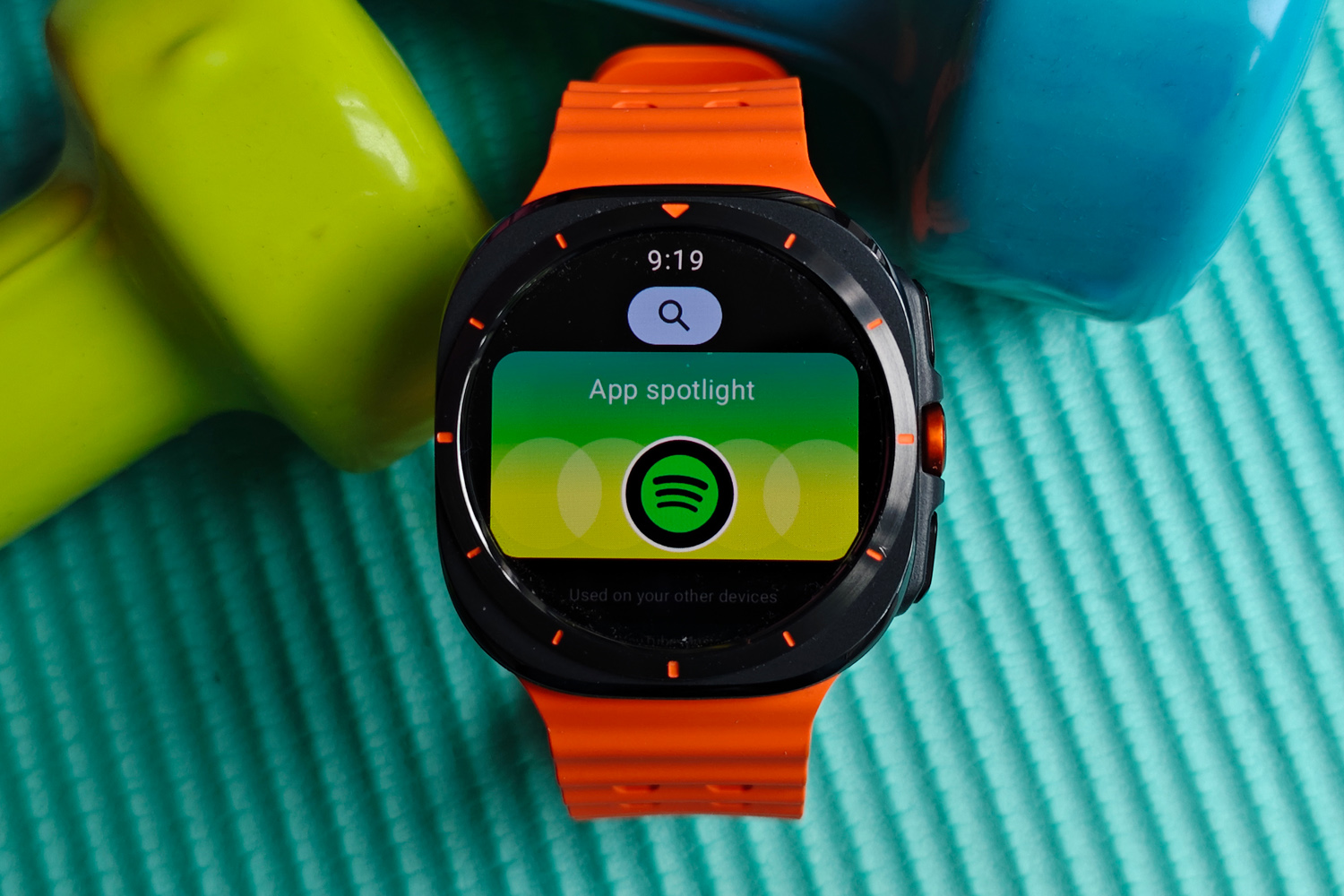
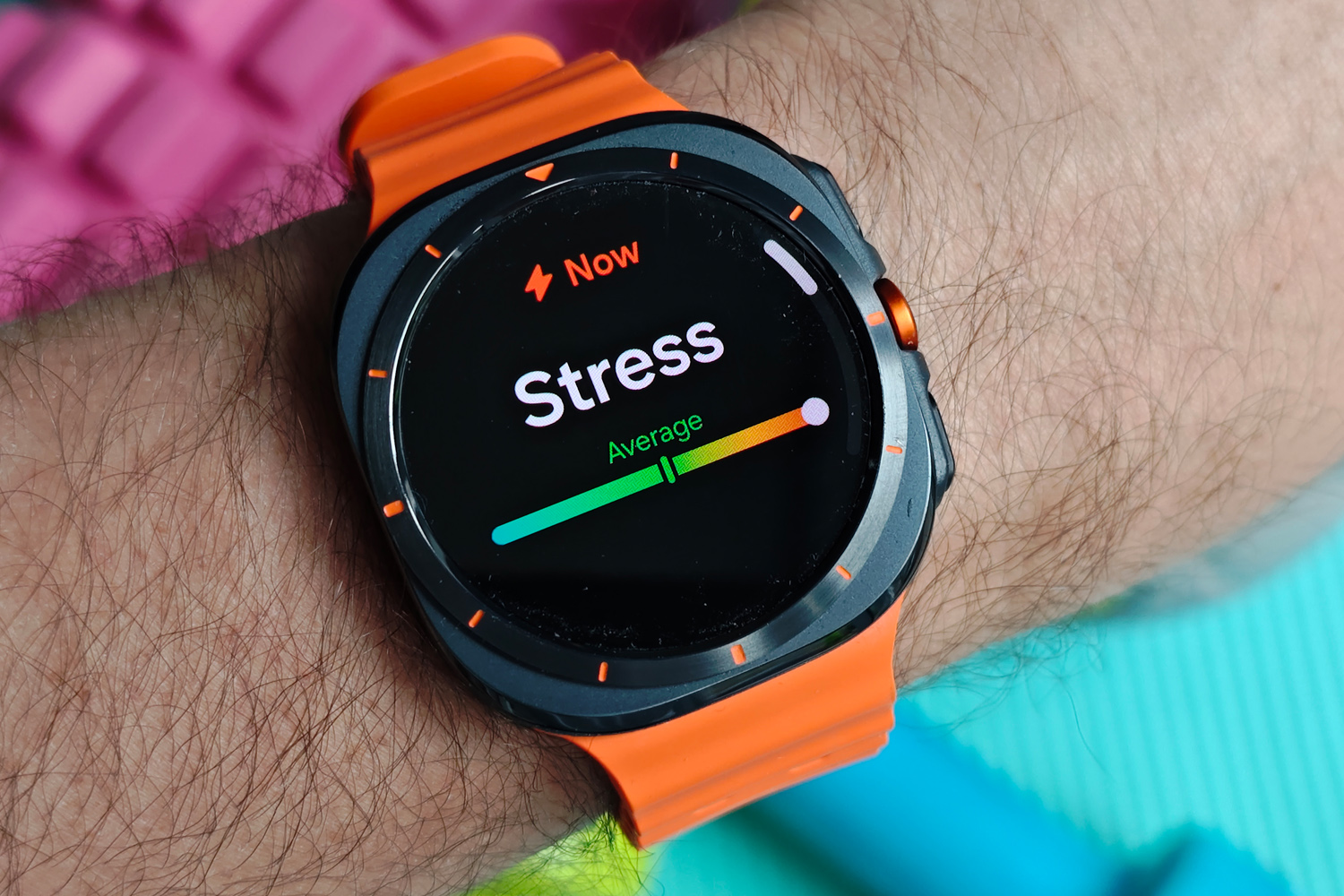
Hardware-wise you’re getting the same Samsung-made Exynos W1000 chipset and 2GB of RAM as the vanilla Galaxy Watch7. This is all-new silicon that promises up to 3x faster performance than the previous generation, while also being more power efficient thanks to a thinner 3nm production process.
The Galaxy Watch Ultra was never anything but instantly responsive to taps, swipes and gestures, making it easily as fast in real-world use as any wearable with a Snapdragon Wear chipset inside. Full access to the Play Store gave me plenty of chances to test performance, and on every one the Watch Ultra delivered. Spotify could open playlists without chugging, and apps with lots of mapping data were speedy too.
32GB of on-board storage will be plenty for most people, with enough room for many hours of music as well as a bunch of third-party app installs. That said, it’s still half what you get inside an Apple Watch Ultra 2.
Samsung says Watch Ultra owners should expect several days of ‘regular’ use, with sports tracking using GPS reducing that down significantly. It helps that there’s a sizeable 590mAh battery inside, which is as big as the one found in the old Galaxy Watch5 Pro. How much you actually get from a charge depends if, like me, you insist on enabling the always-on display mode. I could squeeze two days between charges, but three was only really doable with always-on switched off and a bit of power saving. That’s on par with Apple’s best watch, but falls behind dedicated sports watches. The newer OnePlus Watch 3 has since put it to shame with five full days between refuels.
More frustrating was how slow this watch is to recharge. Waiting until the battery was into single digits before popping it onto Samsung’s proprietary charging puck would mean a near-three hour wait before it was fully juiced up.
While I didn’t experience it during my testing, some early Galaxy Watch Ultra models showed signs of excessive battery drain. These were addressed in an over-the-air software update, which also patched a few software bugs and generally smoothed out OneUI 6.0. A second update a few months later did more of the same, with no new features or interface tweaks mentioned in the changelist. I’m not expecting any major updates until Samsung rolls out a new version of OneUI, or Google finalises the next version of Wear OS – which will most likely be when the Watch Ultra’s successor arrives, around August 2025.
Samsung Galaxy Watch Ultra verdict
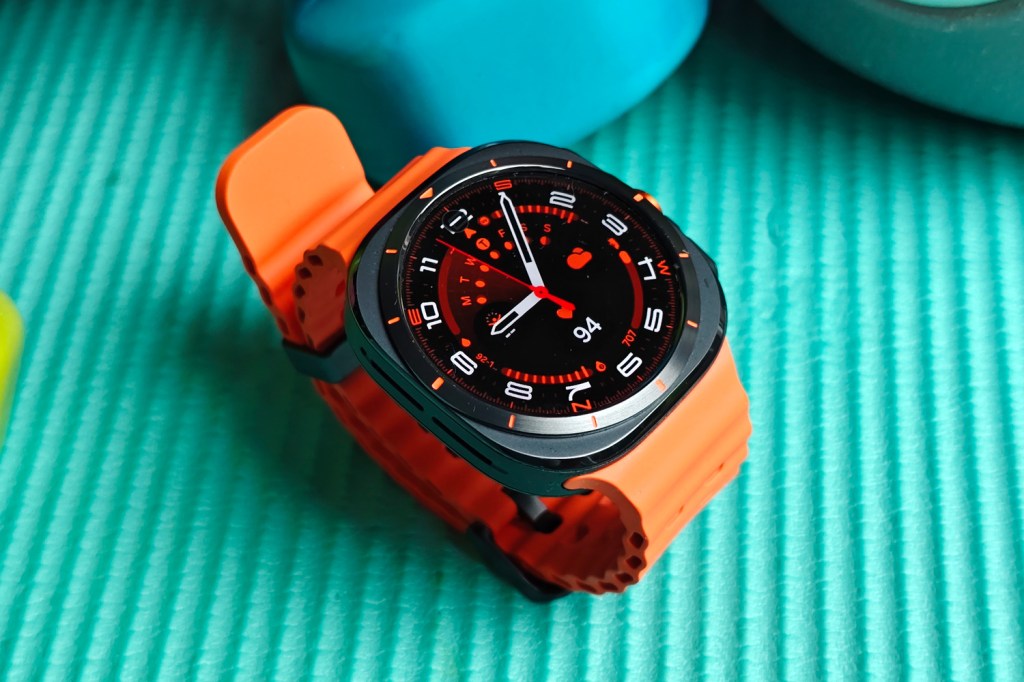
It’s easy to look at the Galaxy Watch Ultra and write it off as an Apple Watch Ultra clone. Same name, same materials, same style of strap, same extreme focus. Samsung hasn’t helped itself by picking the exact same colour scheme, either. But it’s exactly the sort of wearable Android users were missing out on.
It looks and feels every bit the premium sports watch, with the sort of health and fitness tracking smarts I’d expect of Garmin or Polar. WearOS has never felt slicker, and the styling clearly marks it out as the best watch Samsung has to offer. I wish it delivered a bit more battery life, and the price is eye-watering compared to the regular Galaxy Watch7 – which, don’t forget, has a pretty much identical feature set.
Traditional watch fans have never balked at spending big money on a timepiece. So why should the smartwatch world be any different? If you want to make a statement on your wrist, and have an Android phone in your pocket, this is the best way to do it.
Stuff Says…
The Galaxy Watch Ultra is the tough WearOS watch many Samsung fans were waiting for. It’s got the sensors and smarts to challenge dedicated GPS watches, but you’re really paying for the bold design.
Pros
Tough, weather-resistant case made for adventure
Fitness and exercise tracking rivals serious sports watches
Comfortably lasts two days between charges
Cons
Two-day battery life a bit underwhelming
Can’t handle watersports like an Apple Watch Ultra can
Some features off-limits unless you have a Samsung phone
Samsung Galaxy Watch Ultra technical specifications
| Screen | 1.5in, 480×480 AMOLED |
| CPU | Samsung Exynos W1000 |
| Memory | 2GB RAM |
| Storage | 32GB storage |
| Operating system | WearOS 5 |
| Battery | 590mAh |
| Dimensions | 48x48x12.1mm, 60.5g |

